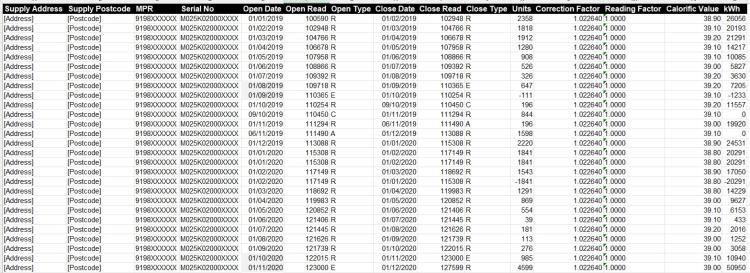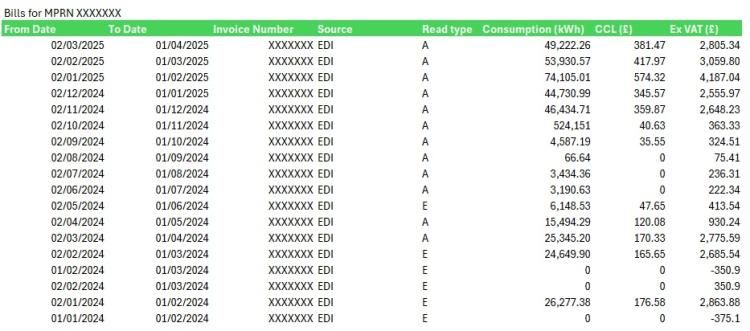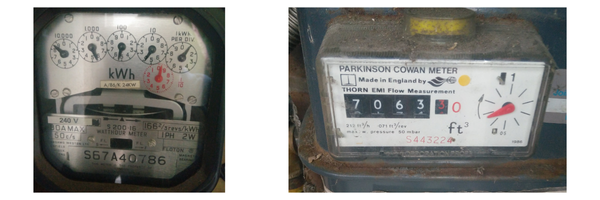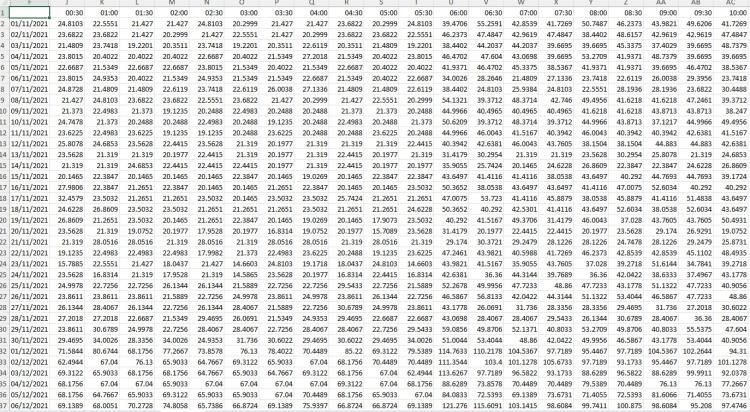How to find and collect energy usage data
Accurately tracking your organisation’s energy usage is essential for effective energy management, cost control and environmental reporting.
Below are the main sources of energy data and how to collect them.
1. Collect monthly utility bills
Utility bills contain essential information about your energy usage and costs.
Key elements to focus on include:
- Billing period – Start and end dates of the billing cycle (usually monthly). This helps to ensure data is tracked consistently.
- Total energy consumed -Typically shown in units like kilowatt-hours (kWh).
- MPAN / MPRN – these are supply point identifiers – MPAN [Meter Point Administration Number], for electricity and MPRN [Meter Point Reference Number] for gas – that help ensure you’re reading and tracking the correct supply, especially important if your site has multiple supplies. Note that meter serial numbers can also be helpful, but these can change if the meter is replaced.
When collecting energy data from utility bills, it's important to identify the type of data provided:
- Actual bills: Based on real meter readings, either taken manually or via a smart meter. These provide the most accurate data and are typically marked as "Actual" (A). Sometimes also (R) for smart meter readings, and (C) for customer manual readings.
- Estimated bills: Calculated using historical data or projections when a real meter reading isn’t available. These are marked as "Estimated" (E).
- Partially actual / estimated bills: Contain a mix of estimated and actual readings e.g. estimated start and end readings with an actual reading in between. These are sometimes marked as “Partially Actual” (PA) or “Interim Actual” (IA).
Where to get utility bills:
- Utility provider’s customer portal
- Paper / pdf statements
- Energy brokers or consultants (if applicable)
- Energy bureau / management software

Example electricity bill

Gas utility provider data download example

Bureau software output example
2. Read your meters manually
If your organisation doesn’t have smart meters, or if you want to verify the accuracy of your bills, take regular (monthly) manual meter readings and record the date of each reading.
This method provides a direct and reliable source of data, especially for validating energy bills and replacing estimated readings.
Each reading should include the date, time, meter ID and the recorded value. (Note that for gas or other fuels meter readings will be in volume e.g. m3 or litres so will need to be converted to kWh. Conversion factors can often be found on bills).

Left: Old (non-smart) electricity meter, Right: Old (non-smart) gas meter
3. Half hourly data
This is typically data that is captured via a smart meter installed on-site, typically recording energy consumption every 30 minutes.
This level of granularity provides valuable insights into usage patterns, peak demand periods, and potential inefficiencies throughout the day.
The data is usually available via the energy supplier or a third-party data collector, often in downloadable CSV files.

